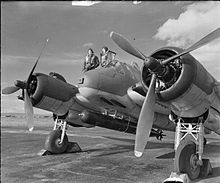
The Handley Page HP.52 Hampden is a British twin-engine medium bomber that was operated by the Royal Air Force (RAF). It was part of the trio of large twin-engine bombers procured for the RAF, joining the Armstrong Whitworth Whitley and Vickers Wellington. The Hampden was powered by Bristol Pegasus radial engines but a variant known as the Handley Page Hereford had in-line Napier Daggers.
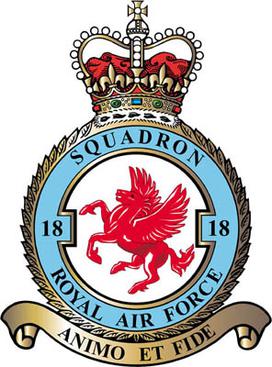
No. 18 Squadron of the Royal Air Force operates the Boeing Chinook from RAF Odiham. Owing to its heritage as a bomber squadron, it is also known as No. 18 (B) Squadron.

No. 220 Squadron of the Royal Air Force (RAF) was founded in 1918 and disbanded in 1963 after four separate periods of service. The squadron saw service in both the First and Second World Wars, as a maritime patrol unit, and finally as part of Britain's strategic nuclear deterrent.

No. 3 Group RAF of the Royal Air Force was an RAF group first active in 1918, again between 1923 and 1926, then as part of RAF Bomber Command from 1936 to 1967, and recently part of RAF Strike Command from 2000 until it disbanded on 1 April 2006.

No. 489 (NZ) Squadron was a torpedo bomber squadron established for service during the Second World War. It was a New Zealand squadron formed under Article XV of the Empire Air Training Plan. Although its flying personnel were largely drawn from the Royal New Zealand Air Force, the squadron served in Europe under the operational and administrative command of the Royal Air Force as part of Coastal Command.
No. 90 Squadron RAF is a squadron of the Royal Air Force.

No. 102 Squadron was a Royal Air Force night bomber squadron in the First World War and a heavy bomber squadron in the Second World War. After the war it flew briefly as a transport squadron before being reformed a light bomber unit with the Second Tactical Air Force within RAF Germany. Its last existence was as a Thor strategic missile unit.

No. 455 Squadron was a Royal Australian Air Force (RAAF) torpedo bomber squadron during World War II and became famous as part of the "ANZAC Strike Wing" that was formed from Australian and New Zealand squadrons. Raised in early 1941, mainly from Australian personnel, the squadron served over Europe during the war, operating from various bases in the United Kingdom; it also briefly sent a detachment to the Soviet Union in 1942. Operating Handley Page Hampdens and Bristol Beaufighters, the squadron mainly undertook anti-shipping and anti-submarine operations during the war. It was disbanded in May 1945 following the cessation of hostilities against Germany.
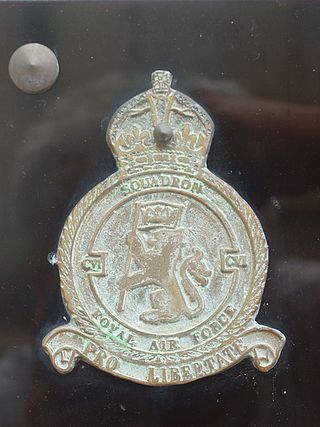
No. 106 Squadron RAF was a Royal Flying Corps and Royal Air Force squadron active from 1917 until 1919, throughout World War II and during the Cold War from 1959 until 1963.
No. 113 Squadron began service in 1917 with the Egyptian Expeditionary Force commanded by General Edmund Allenby. Initially, the squadron was a unit of the Royal Flying Corps, serving during the Sinai and Palestine Campaign and as a reconnaissance, army cooperation, bomber, fighter, transport and missile operation squadron during its existence.

No 151 Wing Royal Air Force was a British unit which operated with the Soviet forces on the Kola Peninsula in the northern USSR during the first months of Operation Barbarossa, in the Second World War. Operation Benedict, the 1941 expedition to Murmansk, provided air defence for Allied ships as they were discharging at ports within range of Luftwaffe units in Norway and Finland.

Number 57 Squadron, also known as No. LVII Squadron, is a Royal Air Force flying training squadron, operating the Grob Prefect T1 from RAF Cranwell, Lincolnshire.

No. 223 Squadron RAF was a squadron of the Royal Air Force. Originally formed as part of the Royal Naval Air Service (RNAS), the Squadron flew in both World Wars.
No. 248 Squadron was a squadron of the Royal Air Force, active immediately after World War I, and again during World War II.
No. 82 Squadron RAF was a Royal Air Force squadron that was first formed in 1917 and last disbanded in 1963. It served at times as a bomber unit, a reconnaissance unit and lastly as an Intermediate Range Ballistic Missile (IRBM) unit.
No. 107 Squadron RAF was a Royal Flying Corps bomber unit formed during the First World War. It was reformed in the Royal Air Force during the Second World War and was operational during the Cold War on Thor Intermediate Range Ballistic Missiles.
No. 254 Squadron of the Royal Air Force was the designation of a number of units formed throughout the 20th century.

No. 226 Squadron RAF was a unit of the British Royal Air Force that existed as a bomber squadron during the First and Second World Wars, and as part of the UK's nuclear ballistic missile force in the early 1960s.
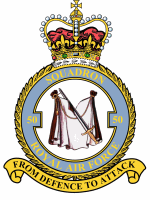
No. 50 Squadron was a squadron of the Royal Air Force. It was formed during the First World War as a home defence fighter squadron, and operated as a bomber squadron during the Second World War and the Cold War. It disbanded for the last time in 1984.
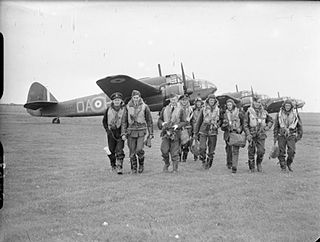
Royal Air Force North Coates or more simply RAF North Coates is a former Royal Air Force station in Lincolnshire, England, six miles south-east of Cleethorpes, and close to the mouth of the Humber estuary. It was an active air station during the First World War, and then again from the mid-1920s. Between 1942 and 1945, during the Second World War, it was the home of a Coastal Command Strike Wing, and from 1958 was a base for Bloodhound surface-to-air missiles, until it closed in 1990.
